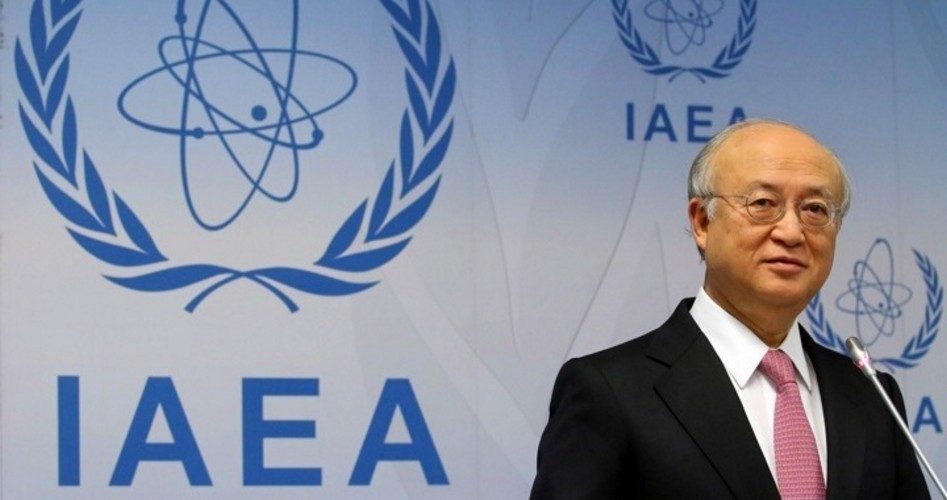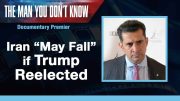
Yukiya Amano (shown), the director general of the UN’s International Atomic Energy Agency (IAEA), announced on November 28 that Iran has invited his agency to visit the heavy water plant in the central city of Arak. Heavy water is commonly used in plutonium production.
Amano’s announcement came only four days after Secretary of State John Kerry and leaders from France, Britain, Germany, China, and Russia reached a nuclear deal with Iran, following several days of negotiations that took place in Geneva. The agreement was reached less than three months after Iran’s new President Hassan Rouhani promised, in an interview with NBC News, to makes major changes in Iran’s relationship with other nations.
An AFP report quoted a statement to reporters made by Reza Najafi, envoy to the International Atomic Energy Agency: “We expect that either at the end of December or the beginning of January we should start implementing the measures agreed by both sides.”
The transcript of a White House conference call with members of the media was released on November 24, summarizing the administration’s assessment of the agreement reached with Iran. The release noted:
First of all, Iran has committed to halt all enrichment above 5 percent and dismantle the technical connections required to enrich above 5 percent. Iran has committed to neutralize its stockpile of near 20 percent uranium, and this is, of course, what has been of principal concern to us in terms of their stockpile. It will dilute below 5 percent, or convert to a form that is not suitable for further enrichment, its entire stockpile of near 20-percent enriched uranium before the conclusion of this six-month phase.
Additionally, noted the release, Iran will also not install additional centrifuges of any type and will not install or use any next-generation centrifuges to enrich uranium, and will not construct additional enrichment facilities.
Iran also promises to halt progress on the growth of its 3.5 percent-enriched uranium stockpile over the next six months, in addition to neutralizing the stockpile of 20 percent-enriched uranium.
And, finally, noted the report, Iran has committed to no further advances of its activities at the Arak heavy water plant and will not construct a facility capable of reprocessing spent fuel, preventing it from separating plutonium from spent fuel.
Low-enriched uranium, suitable for powering nuclear reactors, is generally enriched to a level of 3-4 percent U-235. Highly enriched uranium has a greater than 20 percent concentration of U-235; however, the fissile uranium used in nuclear weapons usually contains 85 percent or more of U-235.
The White House statement also summarized the role of the IAEA in verifying Iran’s compliance with the agreement. For example, Iran has committed to daily access by IAEA inspectors at the Natanz Nuclear Facility (Iran’s central facility for enrichment with over 5000 centrifuges), and the underground uranium enrichment plant near the village of Fordo. The UN agency will also have access to centrifuge assembly facilities, centrifuge rotor component production and storage facilities, and uranium mines and mills.
The P5-plus-1 nations have committed to establishing a joint commission in Iran that will work with the IAEA to “monitor implementation and address issues that may arise.”
In return for Iran’s cooperation, the United States has agreed to end some of its sanctions on the Islamic nation, including those on Iran’s petrochemical exports. However, notes the White House statement, “the revenue that Iran earns from these sales over the next six months will continue to be restricted by our sanctions.” However, U.S. policy “is designed so that the core of our sanctions, the sanctions that have had a tremendous bite — the oil, banking and financial sanctions — all remain in place.”
The statement frankly admits that “the relief that Iran gets under this agreement is insignificant economically.” Furthermore, all UN Security Council and EU sanctions remain in effect. And an unidentified “senior administration official” stated: “we do not recognize a right for Iran to enrich uranium.” Given the audacity of U.S. administration officials dictating what “right” Iran has to run its own domestic programs, it is a wonder that the Iranians have agreed to the continuation of such stringent external controls and violations of their national sovereignty. Especially in view of the paltry concessions they received in return.
An article in The Atlantic for January 5, 2012, headlined “Ron Paul Vindicated on Iran (Unfortunately),” cited a statement made by then-presidential candidate Ron Paul the previous week asserting that the ever-tightening sanctions on Iran might be perceived from an Iranian point of view: It’s as if China were to blockade the Gulf of Mexico, said Paul; it’s “an act of war.”
The writer of the article, Robert Wright cited Vali Nasr, a man he identified as a highly respected Middle East expert, who has “a direct line into Iranian Leader Ayatollah Ali Khamenei’s inner circle.” Wright observes:
Nasr says the tightening of the screws is making Iran increasingly determined to get nuclear weapons — not to start a war, but to prevent one. Having seen what happened to Muammar Qaddafi, says Nasr, Iran’s leaders worry that foreign powers would “feel safe enough to interfere in the affairs of a non-nuclear-armed state.”
This is the kind of thing Ron Paul presumably had in mind when he said Iran may want nuclear weapons in order to get some “respect.” But hey, what does Ron Paul know?
The rationale usually offered by many in the West for putting pressure on Iran to limit (or even suspend) its nuclear fuel-enrichment program is that the program may enable Iran to produce nuclear weapons, making the Islamic republic a threat to other nations. In other words, it is asserted that such sanctions will ensure the peace.
However, it may be worthwhile to consider how well such a policy worked in the past. In “How U.S. Economic Warfare Provoked Japan’s Attack on Pearl Harbor,” Robert Higgs (Senior Fellow in Political Economy for The Independent Institute and Editor at Large of the Institute’s quarterly journal, The Independent Review) observed:
The Roosevelt administration, while curtly dismissing Japanese diplomatic overtures to harmonize relations, imposed a series of increasingly stringent economic sanctions on Japan. In 1939 the United States terminated the 1911 commercial treaty with Japan. “On July 2, 1940, Roosevelt signed the Export Control Act, authorizing the President to license or prohibit the export of essential defense materials.” Under this authority, “[o]n July 31, exports of aviation motor fuels and lubricants and No. 1 heavy melting iron and steel scrap were restricted.” Next, in a move aimed at Japan, Roosevelt slapped an embargo, effective October 16, “on all exports of scrap iron and steel to destinations other than Britain and the nations of the Western Hemisphere.” Finally, on July 26, 1941, Roosevelt “froze Japanese assets in the United States, thus bringing commercial relations between the nations to an effective end. One week later Roosevelt embargoed the export of such grades of oil as still were in commercial flow to Japan.”[2] The British and the Dutch followed suit, embargoing exports to Japan from their colonies in southeast Asia.
[All quotations in above paragraph are from George Morgenstern, “The Actual Road to Pearl Harbor,” in Perpetual War for Perpetual Peace, pp. 322–23, 327–28.]
Dr. Higgs noted: “Roosevelt and his subordinates knew they were putting Japan in an untenable position and that the Japanese government might well try to escape the stranglehold by going to war.”
Let us hope that history does not repeat itself and that the West does not back Iran into such a tight corner that Iranians come to the conclusion that war is the only way out.
Photo of Yukiya Amano: AP Images



